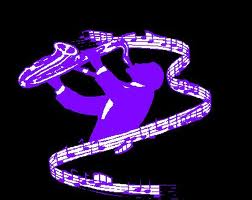 I recently spent an evening with some good friends, enjoying a terrific paella and a few bottles of Cabernet. The conversation turned to music, and the host said something to the effect that jazz must be the most liberating and fun type of music to play, because jazz musicians are able to make everything up as they go along. Although she isn’t a professional musician, she is substantially better-informed than your run-of-the-mill music aficionado, as she sings with a choir, has excellent pitch and knows how to blend with the other voices.
I recently spent an evening with some good friends, enjoying a terrific paella and a few bottles of Cabernet. The conversation turned to music, and the host said something to the effect that jazz must be the most liberating and fun type of music to play, because jazz musicians are able to make everything up as they go along. Although she isn’t a professional musician, she is substantially better-informed than your run-of-the-mill music aficionado, as she sings with a choir, has excellent pitch and knows how to blend with the other voices.
But her comment led me to launch into a diatribe in which I attempted to point out that she had a fundamental misconception about the nature of jazz improvisation. Specifically, jazz musicians practically never make things up on the spot – virtually every line, chord voicing or substitution pattern is something he has practiced hundreds, if not thousands, of times.
I went on to say that for a jazz musician the element of improvisation comes in when he plays one of these musical ideas with some slight alteration in phrasing, or employs it in a slightly different context than originally intended. Or he may connect one or more of these elements with another element in a novel manner, such that the resulting sequence is something he hasn’t played before.
In fact, a soloist might play the identical musical idea twice, where one rendition may be simply a recitation of an idea he has practiced (again, hundred or thousands of times); but the other might be properly termed improvisation. Why? Because the second version came from a deeper region of the player’s soul, such that he is investing it with a new emotional thrust, rendering it for all practical purposes a “new” idea.
Sometimes, new ideas or interpretations can even come from making a mistake! A while back I was jamming on one of my tunes with a guitarist friend of mine, and he accidentally transposed a fingering so that he was playing a B7 flat-9 chord with an A in the bass instead of the chord I had written, a straight Ami11. The sound of his chord was such a striking departure from the one I had written that I ended up using it in the final chorus, which added a terrific element of surprise to the tune.
All of this is meant to point out that countless hours of laborious and occasionally painful and frustrating practice lie behind the apparent freedom of jazz improvisation. Yet, my friend was right about one thing: Jazz improvisation is often great fun and, indeed, an expression of true liberation.
